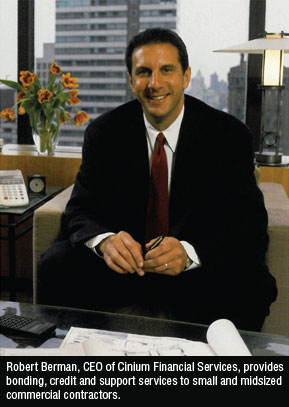 At its peak in 2007, the U.S. construction industry employed more than 7.5 million Americans. Since then, more than 2 million contractors and construction workers have lost their jobs, according to the U.S. Bureau of Labor Statistics. The unemployment rate for people in this market is more than twice the national average. It seems that everyone knows someone who has been affected: a nephew who can't make ends meet anymore as a roofer or a son-in-law who is in the painting business and can't catch a job.
At its peak in 2007, the U.S. construction industry employed more than 7.5 million Americans. Since then, more than 2 million contractors and construction workers have lost their jobs, according to the U.S. Bureau of Labor Statistics. The unemployment rate for people in this market is more than twice the national average. It seems that everyone knows someone who has been affected: a nephew who can't make ends meet anymore as a roofer or a son-in-law who is in the painting business and can't catch a job.
It wasn't supposed to happen this way. After the U.S. government announced its stimulus package in 2008, billions of dollars went into banks and insurance companies in an effort to keep credit moving through the economy. One of the main purposes of the $700 billion Troubled Asset Relief Program (TARP) was to encourage banks to lend again at levels before the start of the recession–both to consumers and other banks.
But the opposite has happened. Despite TARP, lending is still well below pre-recession levels, 2 years after the government announced the official end of the recession. Rather, 75 percent of banks have tightened their lending standards since the recession hit, making it harder for contractors to get working capital to see their way to the end of a job. And despite public spending on infrastructure reaching an all-time high in 2010, insurance companies have made it tougher to secure the surety bonds that are required for this sort of work. Without a bonding line, contractors can't bid for work, and even if they could, without a credit line they can't fund the job anyway.
Want to continue reading?
Become a Free PropertyCasualty360 Digital Reader
Your access to unlimited PropertyCasualty360 content isn’t changing.
Once you are an ALM digital member, you’ll receive:
- All PropertyCasualty360.com news coverage, best practices, and in-depth analysis.
- Educational webcasts, resources from industry leaders, and informative newsletters.
- Other award-winning websites including BenefitsPRO.com and ThinkAdvisor.com.
Already have an account? Sign In
© 2024 ALM Global, LLC, All Rights Reserved. Request academic re-use from www.copyright.com. All other uses, submit a request to [email protected]. For more information visit Asset & Logo Licensing.








